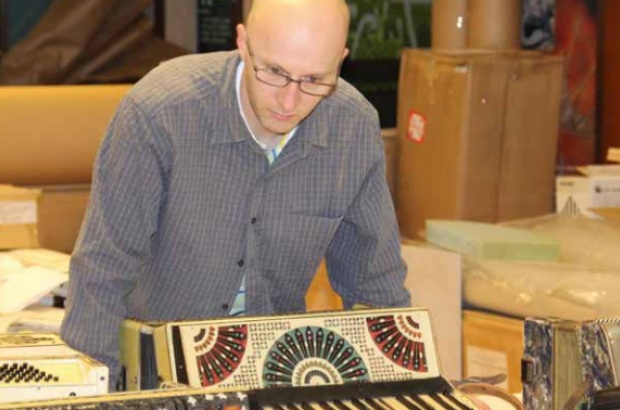- Daily & Weekly newsletters
- Buy & download The Bulletin
- Comment on our articles
Organ grinder: The art of restoring old musical instruments
As a teenager in Spa, I played the organ in church. An organ manufacturing company in Francorchamps was looking for an apprentice, and that’s how it started. I then specialised in barrel organs and mechanical instruments and went to work for the Invisible Musicians museum in Brussels. It was a private collection and I was part of a team that set up exhibitions around the world.
In 2000, while I was in Taiwan, I was invited to visit the prestigious Chimei museum. It was founded by a philanthropic industrialist and is probably the largest collection of western art in Asia. I later became self-employed and married a Taiwanese woman. As we visited the country every year, I contacted the museum offering to repair their mechanical instruments, which would pay for the annual family holiday. Then it took on another dimension when the owner, who is now 87, decided to create an enormous new museum as his legacy: a marble structure based on the palace of Versailles, dedicated to the artistic education of the Taiwanese people.
I was asked to reorganise the mechanised instruments. It was important for me that barrel organs were included in the musical scenography, which nobody had yet thought about. One sleepless night, I drew some sketches which were met with enthusiasm and three days later the director put me in charge of the scenography of the whole music section. It was a real challenge, as we had to start by itemising and completing the collection. The owner had bought at auction, following his heart. It was a colossal task but extremely enriching.
We started with traditional folk instruments, moved into orchestral music, and then the question was, if you don’t have music at home and you don’t go to concerts, where do you hear it? Here, we arrived at the history of the gramophone and mechanical music. We drew a path in the history of music in all its forms.
Modern barrel organs like those that I build are based on the instruments made by immigrant Italians living in France and Germany in the 18th century. Still driven by a handle or crank, they are mainly used today to accompany a singer. In my workshop, I have pianos, barrel organs and even a jukebox, a 1947 American model.
We forget that mechanical music popularised, for example, opera. Why did people sing in Figaro? The aristocracy went to the opera while everyone else heard it in the streets played on a barrel organ by gypsies and travelling fairground entertainers.
Organs may now be outmoded and replaced by recorded and digital music, but they played an important role. The market for automatic pianos can be pitiful. An unrestored, but playable mechanical piano can be bought at auction for €3,000-€4,000 and if it needs restoring, it’s worth nothing as the restoration costs around €6,000-€8,000. Fortunately, it’s different for other instruments, such as the fair organ I’m currently working on. It is from the French company Limonaire and it will be worth €25,000 when I’ve finished. They are like normal pianos or organs but with different mechanics.
Underneath each note, there’s a pneumatic bellow that works with air tubes. When you operate the foot pedals (with a barrel organ, it’s the handle), you pump air which passes through small boxes and this is pushed into tiny holes. The perforated paper is linked to the bellows, which is what plays the notes. It’s possible to mechanise any instrument – banjo, harp, violin – and my job in Taiwan was to bring these hundred-year-old instruments back to life for the visitor.
All the materials in the instrument deteriorate over time. When you restore a historic instrument, you try and make authentic repairs. For this piano, which hasn’t been repaired in almost 100 years, we buy leather that’s been tanned in a traditional way, and that costs a fortune. We also respect the spirit of the renovation so that the next person who restores the instrument can draw inspiration from your work, even if that’s in a hundred years. The same ethos applies to art and paintings.
There’s a big dilemma in restoration today. I think that if you maintain an instrument for its original function rather than in its original state, that means you can still play it. If you believe in conservation, the instrument cannot be played.
I consider myself an artisan because I have a direct relationship with the client. If a client asks me a question about the restoration, I know all the answers. Living in a region like this suits the artisan life because of its quiet rhythm. Half our clients are gypsies and professional musicians, and each person who buys an organ has a story to tell. We’re lucky that way.
This article first appeared in WAB magazine














